Best Of
Little-known mistakes and bloopers in Little House on the Praire

If you think Little House on the Prairie was picture-perfect, think again!
This beloved classic, known for its timeless charm, wholesome stories, and adventurous spirit, wasn’t without its share of slip-ups.
Despite its seemingly flawless appearance, a myriad of bloopers and mistakes somehow made it past the editing room.
I still find myself glued to reruns of Little House on the Prairie, just like my parents were back in the day. In an instant, it transports us to the late 19th century, and introduces us to the resilient Ingalls family.
Watching the episodes now, it’s clear that the show’s message is as powerful as ever — treating others with respect, embracing honesty, and valuing the importance of family and friends.
But those of us with a sharp eye have discovered a treasure trove of blunders and goofs that are sure to make you do a double-take — and maybe even make you chuckle.
Laura’s mystic pregnancy
Laura first announced her pregnancy late in season seven, during a warm season, with the flowers blooming and the prairie looking its best.
Yet, by the time the following summer rolled around, she was still very much expecting — leaving fans wondering just how long this prairie pregnancy was supposed to last.

Honestly, it just felt like there was a disconnect between the writers and the rest of the team, a clear case of sloppy story management.
Nellie Oleson wore a wig
We all remember Little House on the Prairie‘s resident troublemaker, Nellie Oleson, brought to life by Alison Arngrim. But did you know Nellie’s role in the show was much bigger than in the original books?
The character’s expanded presence is a testament to just how much viewers loved to hate this mischievous villain — especially when she teamed up with her equally conniving onscreen mother, Harriet.
Many surely remember Nellie’s iconic blonde curls, but achieving that look was no easy task. Alison Arngrim’s own hair was transformed into those signature ringlets using an old-fashioned curling iron that had to be heated in an oven — a rather painful process that required both time and patience.
The solution was to bring in a wig. To keep it securely in place, they used a large metal comb along with dozens of long, straight metal hairpins.
Colonel Sanders Cameo
One of the funniest bloopers on Little House on the Prairie has to be the unexpected appearance of Colonel Sanders, the iconic founder of Kentucky Fried Chicken, in a season eight episode titled ”Wave of the Future.” In this storyline, Nellie’s restaurant transforms into a franchise.
But, as you can imagine, things don’t go as planned, and Nellie regrets the whole ordeal. In an attempt to break free from the contract, she teams up with Charles and Nels to open a rival restaurant.
Then, in a bizarre twist, none other than Colonel Sanders himself shows up, offering Harriet a deal to start her own chicken franchise.

Now, here’s where the hilarity kicks in: the good Colonel wasn’t even born until 1890, and KFC didn’t hatch until 1952. Meanwhile, Little House is supposed to be set in the 1870s and 1880s! Talk about a time-traveling entrepreneur.
And for a little extra flavor — whenever fried chicken showed up in any meal on the show, rumor has it that it actually came straight from KFC. So, maybe Colonel Sanders’ cameo wasn’t that far-fetched after all.
The missing coats
This is something I’ve often wondered about — the glaring lack of winter coats during freezing weather. In the episode titled “Bless All the Dear Children,” Laura’s baby gets kidnapped around Christmas in Minneapolis.
Now, anyone familiar with Minneapolis in December knows it can be downright frigid, yet everyone is strolling around without a coat, as Gilbert points out.
This oversight might be due to the fact that the show was filmed in Tucson, Arizona, during the summer months.
A fashion slip
In some episodes, you can catch a glimpse of Caroline’s bra when she moves just the right way. Considering the series is set in the 1870s and 1880s, this is a bit of an anachronism — since bras weren’t even invented until 1912!
Some of the women also sport hairstyles with perms or curls on set – a look more at home in the 1970s than in the 1880s.
On a similar note, you might have noticed that most of the men in the series are clean-shaven, which is a far cry from the historical photos of the era. In reality, the vast majority of adult men sported facial hair — beards were all the rage. In fact, Charles Ingalls himself had a beard for most of his adult life. It seems like the show’s grooming choices didn’t quite match the rugged fashion of the time.
A dummy instead of a living person
In the season five episode “The Odyssey,” an intense moment unfolds when an unknown assailant tries to throw Albert off a moving train.
But Laura quickly jumps into action, shoving the villain off just in time to save Albert. However, amidst this dramatic scene, a funny blooper happens.
Keen-eyed viewers can spot a dummy being thrown from the train, landing awkwardly in the grass. Meanwhile, a fearless stuntman rolls down the hill, outdoing the stationary dummy in a hilarious contrast.
Melissa Sue Anderson was ”cold and aloof”..
From seasons one to seven of Little House on the Prairie, Melissa Sue Anderson won the hearts of fans as the beautiful blonde-haired Mary, the eldest child of Charles and Caroline Ingalls.
However, her co-stars found it challenging to connect with her. Both Melissa Gilbert and Alison Arngrim shared in their autobiographies that Melissa Sue Anderson —nicknamed “Missy” on set — often came across as cold and aloof during her time on the show. Yet, when you look at photos of the cast together, it’s hard to believe there was any distance between them.
Rumors swirled among the crew that Missy’s overprotective mother contributed to her tendency to keep to herself.
But Nellie and Laura became best friends
Alison Arngrim played the original mean girl, Nellie Oleson, the arch-nemesis of good girl Laura Ingalls, portrayed by Melissa Gilbert. But behind the scenes, it was a different story! Alison and Melissa hit it off and became the best of friends.
When the cameras stopped rolling, they were like real sisters, sharing laughs and creating memories that went beyond the show.
Off-set, they were partners in crime, enjoying sleepovers at each other’s homes and pulling pranks on their unsuspecting co-stars. Who would have thought that the fierce rivalry on screen would spark such a fun and playful friendship off-screen?
The Fallout of grief in “My Ellen”
One of the most memorable episodes of Little House on the Prairie is titled “My Ellen,” which revolves around the tragic drowning of Ellen Taylor.
When Laura and Mary go skinny-dipping with their friend Ellen Taylor, they suddenly find themselves in a tricky situation. Some boys come by, prompting the girls to hide underwater until the coast is clear.
While Laura and Mary manage to resurface safely, Ellen tragically becomes trapped and drowns. The aftermath is heart-wrenching, as Ellen’s grief-stricken mother, in her sorrow, blames Laura for the tragedy.

During Ellen’s funeral, her mother is overwhelmed with sorrow and blames Laura for the tragedy, saying, “YOU did this!” This gut-wrenching accusation hits Laura hard, especially since she already feels guilty about what happened. What stands out, though, is how the adults around them react. Instead of stepping in to defend Laura, they only exchange worried glances and let her suffer alone in her pain.
It’s a confusing moment. With so many adults present, including Reverend Alden and Doc Baker, you’d expect at least one of them to comfort Laura and reassure her that she isn’t to blame. Instead, they leave her to grapple with the harsh words on her own. In “My Ellen,” the emotional weight of the story is undeniable, but there are moments that feel disjointed in terms of storytelling
Michael Landon put frogs in his mouth
Pranks seemed to be a big part of the filming culture, and it was Michael Landon who often led the charge with his creative and funny antics. One hilarious prank was revealed by Rachel Greenbush, who played the youngest Ingalls sibling, Carrie.
The mischievous duo of Greenbush and her on-screen sister, Melissa Gilbert, would sneak off to the creek during breaks for some frog-catching adventures. With their slimy little friends in tow, they’d return to the set to surprise Landon.
In a playful twist, he would take the unsuspecting frogs and pop them in his mouth, then stroll over to fellow cast and crew members. With a cheeky grin, he’d open his mouth to let the frogs jump out, sending everyone around him into startled fits of laughter and panic.
Melissa Gilbert’s rift with Michael Landon
The cast had such great chemistry that you’d think they were a real family, and off-screen the co-stars were a big part of each other’s lives for many years.
But things weren’t always smooth between the actors, and one major incident caused a lasting rift between Melissa Gilbert and Michael Landon.
It all started when the young star discovered news that would forever change how she saw Landon. Landon, while married to his second wife Marjorie Lynn Noe, began an on-set affair with a much-younger woman, Little House‘s makeup artist and stand-in Cindy Clerico.

Gilbert recalls noticing how close Landon and Clerico were becoming on set, but dismissed the thought, refusing to think Landon would cheat on his wife.
“It was nothing untoward; they weren’t ever in a closed-off room, not that I saw,” she wrote in her memoir. “But Mike would walk around holding her puppy, and she was a pretty young thing who wore stylish tight jeans, leotards, and high-heel boots.”
Soon, the cast, including Gilbert, discovered the affair and were devastated by the actions of the actor they had looked up to as a father figure.
“For us, as kids, it was a real blow,” Melissa Sue Anderson later recalled in her biography. “Although we knew he could be difficult at times and had his flaws, we never dreamed he was capable of inflicting that kind of pain on his real family.
“For me personally, I had held him up to a higher moral standard. He had really let me down.”
The traveling quilt
Eagle-eyed fans with laser-like vision have spotted another hilarious blooper: the family quilt seems to have a mind of its own! This elusive quilt pops up in various locations throughout the series — on the Olsens’ bed, Charles and Caroline’s bed, and even on other characters’ beds.
Mostly white with a charming design resembling a double wedding ring quilt, it’s clear that some props were reused for efficiency.
And speaking of locations, have you noticed the Ingalls children’s puzzling journey to and from school? Their route seems to change from episode to episode. Sometimes, they cross the bridge and stroll past the sawmill, while other times they mysteriously appear on the road behind it.
Dean Butler almost killed himself
Some of the cast came into the show in later seasons, one of whom was Dean Butler, who starred as Laura Ingalls’ husband, Almanzo Wilder.
Just days following his college graduation, Dean made his way to the film set that was Little House. It would be a day to remember — for many reasons.
In Butler’s first scene, he was supposed to drive a horse wagon 200-yards down a hill. He had never done it before, and when Michael screamed “action”, things didn’t really work out. The breeze picked up his hat, with Butler instinctually dropping the reins to reach for it. At the same time, the horses, no longer under control, flew off the road and charged towards an oak tree.

People in the production were screaming, but luckily, a crew member managed to reach the horses before they hit the tree.
Dean’s first day on Little House could’ve gone better, with Michael Landon deciding to do the scene instead.
“Michael came up to me, chewing on a cigarette, and said ’well, I think I have to double, you know’,” Butler recalled Landon saying. “‘I can double you but not replace the horses on the show’. That was my first taste of being with Michael, but it was great fun.”
Did Albert die?
Albert Quinn Ingalls, played by a young Matthew Labyorteaux, would become a keystone of the series in 1978. The little boy is an orphan who is adopted in by the Ingalls family – but his exit from the series eluded many TV viewers.
In the 1983 made-for-TV movie ”Little House: Look Back to Yesterday”, Albert is diagnosed with leukemia. But did he die or not? That remains unclear to this date.

“He never officially died in the episode and I think maybe it’s kind of left up in the air to debate… but it was sort of an unspoken thing that we knew he was going to die,” the former child star said in an interview some years ago.
A timeless mistake
In the grand finale of Little House on the Prairie, the TV movie The Last Farewell, there’s a glaring oversight. Set in 1901, it’s clear that most of the characters should be in their 60s or 70s by the start of the 20th century.
For instance, the real-life Charles Ingalls passed away in 1902. The younger characters, like Carrie, Jenny, James, Cassandra, and Nancy, should have transitioned into young adulthood by this point.
Yet, when viewing images from the final seasons, it appears that everyone has aged remarkably little, as if time stood still in Walnut Grove. However, historically, the Wilders had moved to Missouri around the turn of the century.
Went on a pilgrimage to India
Did you notice that Katherine MacGregor, who played Harriet Oleson throughout all nine seasons, was missing from The Last Farewell?
While various reports state that she was on a pilgrimage to India due to her new Hindu faith, her absence from the series finale has another layer. According to other sources, it stemmed from a longstanding personal conflict with Michael Landon over salary and how her talent was utilized.

As we wrap up our journey through the bloopers and mistakes of Little House on the Prairie, we hope you’ve enjoyed this lighthearted look behind the scenes of Walnut Grove.
If these unexpected moments brought a smile to your face, why not share the joy? Spread the laughter by sharing this video on Facebook! Let’s keep the fun alive!
You may like
Best Of
Why You Should Avoid Killing House Centipedes
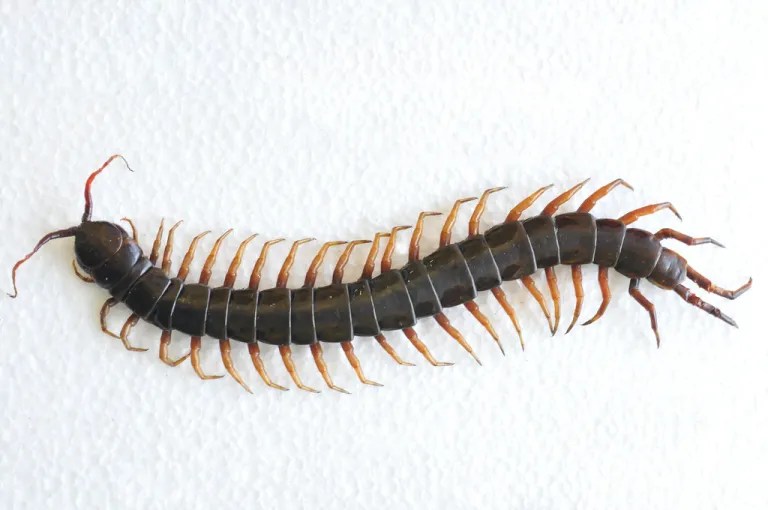
Centipedes are easy to recognize by their worm-like bodies, lots of legs, long antennas, yellow to dark brown colors, and small mouths with venom glands.
They can have 15 to 77 pairs of legs, which help them move quickly and climb walls.

Can a centipede bite you? Centipedes can bite and inject venom, but they usually aren’t dangerous to people or pets. Their bites might cause mild pain or redness, but nothing serious.
However, centipedes aren’t exactly creatures you’d want to welcome. Read on to learn more about centipedes, their predators, why you shouldn’t kill house centipedes yourself, and the benefits of using pest control services.
Five Facts About Centipedes You May Not Know
Here are some surprising facts about those centipedes in your basement:
- The number of legs a centipede has is linked to its age. Centipedes grow more legs as they molt, and if they lose legs, they can regrow them over time through molting. It might take several molts to fully recover lost legs.
- Centipedes are ancient creatures, with their ancestors dating back over 400 million years.

- Centipedes are surprisingly fast. Thanks to their many legs, segmented body, and waxy outer layer, they can move over a foot in less than a second when chasing prey or escaping predators.
- Centipedes eat a variety of animals. While smaller species go for insects, worms, and roaches, larger centipedes can handle much bigger prey.
- Some centipedes, like the common house centipede, can live for up to six years.
Even though their history is fascinating, you likely don’t want these creatures lurking in your basement.
What Are Centipedes’ Natural Predators?
Centipedes are hunted by birds, certain spiders, mice, frogs, beetles, and snakes. Larger centipedes, in turn, feed on animals like frogs and spiders. Predators like frogs and spiders usually target young or weak centipedes that can’t escape quickly.
Why You Shouldn’t Kill a House Centipede
If you spot a house centipede, it might be tempting to get rid of it yourself, but it’s better not to. Having a few house centipedes around isn’t always a bad thing.

Centipedes can be helpful by getting rid of spiders, roaches, and other pests, without building nests or webs. However, their presence can become a problem. While a few centipedes might help control pests, a larger colony can be a nuisance and may even attract more unwanted pests.
Centipedes can live up to 10 years, so you probably don’t want them staying in your home for too long. Even if they aren’t a major problem yet, it’s a good idea to call pest control experts. An infestation might be a sign of a bigger pest issue, and centipedes aren’t always enough to fully manage harmful pests like cockroaches.
Feel free to share this information with your family and friends!
Best Of
Could Alzheimer’s Actually Start in Your Mouth?

Scientists are investigating a surprising possibility: gum disease may cause Alzheimer’s, challenging long-held assumptions about how the memory-robbing condition begins. Traditionally, doctors attribute Alzheimer’s to a mix of genetics, age-related brain changes, and environmental factors—but a growing body of research points toward gum health as a key player in the disease’s development. If these findings hold up, it might be time to upgrade our dental care routines.
Bacteria in the Brain?

Back in 2019, a team of experts noticed that the bacterium behind chronic gum disease (Porphyromonas gingivalis) turned up in the brains of people who had Alzheimer’s. Meanwhile, lab tests on mice revealed that oral infections could trigger the production of amyloid beta—those pesky proteins often linked to dementia. Although many researchers stop short of saying gum disease may cause Alzheimer’s outright, they agree it’s a connection worth exploring further.
The Mouth-Brain Connection

Stephen Dominy of Cortexyme, a startup that looks into all things neurodegenerative, once explained that we’ve suspected germs might spark Alzheimer’s for a while, but the evidence wasn’t strong enough. Then his team found markers of gum bacteria in both diagnosed Alzheimer’s patients and in some who hadn’t been diagnosed. So the real question is whether dementia leads to poor dental care—or if something lurking in your gums could help kick-start the disease. Either way, gum disease may cause Alzheimer’s is a hypothesis that’s impossible to ignore.
Should We Rethink Prevention?
For now, many experts say we shouldn’t panic. Regular brushing, flossing, and dentist visits are always good ideas, regardless of any potential Alzheimer’s link. Still, the notion that a seemingly distant infection could affect our brain health reminds us that the body is one interconnected system. Keeping an eye on gum health just might be another tool in fighting cognitive decline in the future.
All Images Including Featured Image Are Licensed With Freepik.
Please SHARE this article with your friends and family on Facebook.
Best Of
Why ‘Dear Zachary’ is the most upsetting documentary ever made
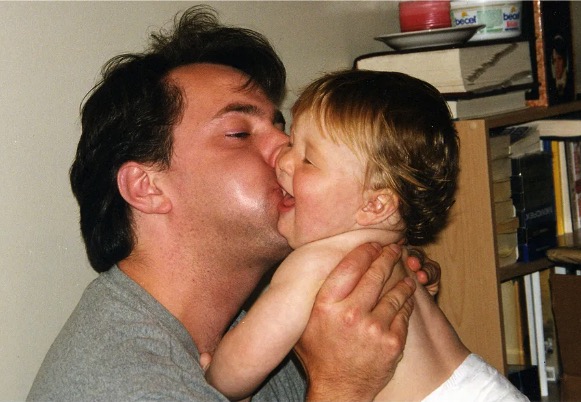

Dear Zachary: A Letter to a Son About His Father is hands down one of the saddest documentaries I’ve ever seen. I honestly don’t think I’ve ever been so moved by a film before – I completely broke down and cried watching it.
It hit me in a way I wasn’t expecting, and I haven’t been able to stop thinking about it since.
Gut-wrenching turn
Dear Zachary: A Letter to a Son About His Father is one of the most captivating documentaries I’ve ever watched, and I’m pretty sure I’m not the only one who feels that way. As heartbreaking and infuriating as this film is, it is still above all a beautiful tribute to friendship, courage and resilience.
If you haven’t seen Dear Zachary, it tells the heartbreaking story of Andrew Bagby, a 28-year-old doctor whose life was tragically cut short by his ex-lover, Shirley Jane Turner.
The film takes an even more gut-wrenching turn when it’s revealed that Turner was pregnant with Andrew’s child at the time of his death. A huge part of the documentary focuses on the relentless fight of Andrew’s parents, Kate and David Bagby, as they struggle to gain custody of their grandson, Zachary, and ensure his safety and future.
The film, which was written, produced, directed, edited, shot, and scored by Kurt Kuenne, was released in 2008. Kurt Kuenne and Andrew Bagby grew up side by side in the tranquil suburbs of San Jose, California.

Their friendship was one of those rare, unbreakable bonds formed in the simplicity of shared childhood memories. As they navigated life together, their paths intertwined in ways only the closest of friends could understand — until a heartbreaking tragedy would change everything.
Born on September 25, 1973, to parents Kathleen and David Bagby, Andrew was a medical student. During his time at Memorial University in Newfoundland, he began a relationship with Shirley Turner, a recent medical school graduate who was nearly thirteen years his senior.
Andrew’s family, friends, and colleagues didn’t like Shirley due to her off-putting behavior. They couldn’t help but feel that Shirley wasn’t really a good match for Andrew – especially her tendency to make inappropriate or overly sexual comments bothered them.
Shot 5 times
Still, they chose not to say anything, respecting Andrew’s decision to keep on dating Shirley. After all, he hadn’t been in a relationship since his painful breakup with his ex-fiancée, and they understood that he might have been looking for someone to fill the void. They didn’t want to add to his struggles by questioning his choices.
After Andrew graduated in 2000, he moved to New York to begin a surgical residency, while Turner relocated to Iowa for her own career. Despite the distance, they maintained their relationship.
However, in 2001, Andrew found himself unhappy in his surgical residency and decided to switch to a family practice residency in Latrobe, Pennsylvania, which he felt was a better fit for him. In fact, he couldn’t have been happier.
But as time passed, the relationship between Andrew and Shirley began to deteriorate, with Shirley becoming increasingly possessive.
In October of that year, Shirley purchased a handgun along with ammunition and began taking firearms lessons. During this time, she exhibited increasingly obsessive behavior towards Andrew, constantly calling him and verbally abusing him during their phone conversations.
On November 3, 2001, during a visit to Pennsylvania, Andrew broke up with Shirley.
She returned to Iowa, but just two days later, she drove nearly 1,000 miles back to Latrobe. Early on the morning of November 5, she arranged to meet Andrew at Keystone State Park. Later that night, he was found dead by a homeless man searching dumpsters for aluminum cans.
The police would later confirm that Andrew had been shot five times: once in the face, once in the chest, once in the back of the head, and twice in the buttocks.
Shirley Turner was immediately suspected, as the ammunition found at the scene matched what she had purchased earlier.
A new, shocking turn
She told authorities that she had been bedridden and sick all day on November 5th, yet evidence showed she had made phone calls from Latrobe, used Andrew’s house phone to call in sick, and accessed several of her personal accounts from his computer.
By the time a warrant was issued for her arrest, Turner had already fled to Canada. Once she learned she was a suspect in the murder investigation, she returned to her hometown of St. John’s, Newfoundland. Meanwhile, Kurt Kuenne began gathering footage from old home movies and interviewing Andrew’s parents, David and Kathleen, for a documentary about his late friend’s life.
Soon, the tragic story would take a new, shocking turn.
In St. John’s, Shirley Turner made a shocking revelation — she was pregnant with Andrew Bagby’s child
She was arrested in December 2001, but shockingly released on bail as the extradition process to the U.S. dragged on. Turner’s lawyers used legal technicalities to delay her extradition, and in the meantime, she gave birth to a baby boy, naming him Zachary, on July 18, 2002.
Determined to be part of Zachary’s life, Andrew’s parents, David and Kathleen, moved to Canada in an effort to gain custody of their grandson. In November 2002, a provincial court ruled that there was enough evidence linking Turner to Andrew’s murder, leading to her re-arrest. David and Kathleen were granted custody of Zachary, but the legal battle was far from over.
Legal battle
In an unexpected twist, Turner wrote a letter to the judge who had locked her up. In an unusual move, she was given legal advice on how to appeal her arrest and imprisonment. In January 2003, Judge Gale Welsh granted her bail, controversially stating that Turner didn’t pose a threat to society at large. This meant that, despite the murder charge, Turner regained custody of Zachary, though David and Kathleen were able to arrange regular visitations.
While this legal tug-of-war unfolded, filmmaker Kurt Kuenne traveled across the United Kingdom and the U.S., interviewing Andrew’s friends and extended family for a documentary. He even visited Newfoundland in July 2003, where he spent time with Zachary, trying to piece together the tragic story of his friend’s life and legacy.
On August 18, 2003, Shirley Turner tragically took her own life—and that of her thirteen-month-old son, Zachary—by jumping into the Atlantic Ocean in a heartbreaking murder-suicide. The devastating loss sent shockwaves through Andrew Bagby’s parents, David and Kathleen, who were not only grieving the death of their grandson but also enraged by the Canadian legal system’s failure to protect him. They launched a campaign to reform Canada’s bail laws, convinced that these laws had allowed Turner to kill her child and herself.

Meanwhile, Kurt Kuenne, who had been working on his documentary about Andrew’s life, found himself facing roadblocks in his efforts to interview the prosecutors and judges involved in Turner’s release. Despite this, the tragedy sparked a broader conversation. In 2006, a panel from Newfoundland’s Ministry of Justice released a report stating that Zachary’s death was preventable and that the government’s handling of the case was inadequate. Turner’s psychiatrist was found guilty of misconduct for helping her post bail, and the director of Newfoundland’s child welfare agency resigned.
David Bagby, consumed by grief and anger, poured his emotions into writing Dance with the Devil: A Memoir of Murder and Loss, which became a best-seller in Canada in 2007. Kurt Kuenne, who had been tirelessly documenting Andrew’s life, finished his film—one that had evolved into something far more profound than he could have imagined. The documentary, a raw and emotional tribute, was dedicated to the memories of both Andrew and Zachary.
But it wasn’t just a story about tragedy; it was about the resilience of the people left behind. The film ends with David and Kathleen, along with their friends and family, reflecting on Andrew and Zachary’s lives. Kurt, in the process of making the film, realized that it was not only about Andrew’s death but also about the profound impact the Bagbys had on those around them. The documentary was, in many ways, a tribute to their strength and perseverance in the face of unimaginable pain.

”The biggest challenge for me came in the editing of the movie, because this film transitioned from a project intended only for loved ones to one that was intended for a mass audience. I wanted the audience to feel like they knew Andrew and his parents, but I also needed to keep the story moving forward, to keep the audience engaged,” Kurt said.
When Kurt Kuenne set out to make Dear Zachary, it was originally meant to be a personal tribute — a cinematic scrapbook filled with loving memories for the son who would never get the chance to know his father, Andrew Bagby.
Kurt interviewed friends, family, and those who had known Andrew, capturing their remembrances of him in a film that would, in its own way, preserve the essence of his life. What began as a project for a small circle of loved ones soon turned into something much more profound.
As the tragic events surrounding Andrew and Shirley Turner unfolded, Kuenne realized that this story had the potential to reach far beyond personal circles.
He knew that Dear Zachary could bring attention to a flawed legal system that had failed to protect Zachary, and so, with great courage, he decided to release the film to the general public. The response was overwhelming, but the pain of watching such a heartbreaking story was almost too much for many to bear.
The film was difficult to watch, raw, and filled with anguish, yet it became a powerful tool for change.
Kuenne didn’t stop at the release of the film. He sent copies of Dear Zachary to every one of Canada’s 400+ members of Parliament, hoping to spark a much-needed conversation about the country’s bail laws. And it worked. After attending a screening of the film, MP Scott Andrews of Avalon was moved to action. On October 23, 2009, he introduced Bill C-464—also known as “Zachary’s Bill”—to the House of Commons. The bill aimed to ensure that the safety of children would be the foremost concern during bail hearings and custody disputes, especially when the person in question had been charged with a serious crime.
The bill was a direct response to the failure to protect Zachary, and it sparked conversations about the need for change in the Canadian justice system. After being introduced to the Senate in March 2010, it was signed into law on December 16, 2010—over seven years after Zachary’s death and more than two years after Dear Zachary was released. It was a hard-fought victory, one that showed the power of one film to change the course of legislation and protect future children from the kind of tragedy Zachary faced.
Even though Dear Zachary was an incredibly difficult watch for so many, its impact was undeniable. It didn’t just capture the life of one man and the loss of a child — it became a catalyst for change. The film’s release and the law it helped inspire were a testament to the power of storytelling to enact real-world change, proving that even the most painful stories can ultimately lead to justice and a better future for others.
Kuenne’s film is important because it doesn’t shy away from the brutal reality of loss. It’s not just a documentary about a man’s murder, but a heartfelt exploration of how families cope with grief, injustice, and the emotional scars that linger long after the cameras stop rolling. The rawness and honesty of the film make it not just a tribute, but a call to action — reminding us of the importance of justice, protection, and the indelible bonds of family.
And in my view, the Bagbys are among the most resilient and courageous people to ever walk this earth. They sacrificed so much to fight for the only remaining piece of their beloved son. Their strength in the face of unimaginable loss is nothing short of extraordinary.
After watching this, I honestly can’t decide if I’m more angry at the system that mishandled the entire case or at Shirley herself. It’s just heartbreaking. If only the system had done its job… if only.
For those with Amazon Prime, the film is available to watch there, and it’s also streaming on Pluto TV. Please share this article so more people can experience this incredibly tragic, yet important story.
Trending
-
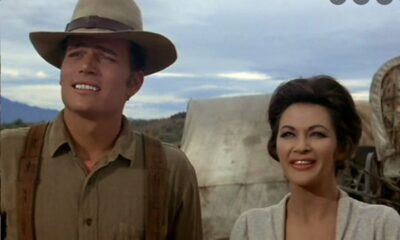
 Entertainment1 year ago
Entertainment1 year agoJohn Wayne’s son speaks on military service, Hollywood life and his dad, ‘The Duke’ – My Blog
-
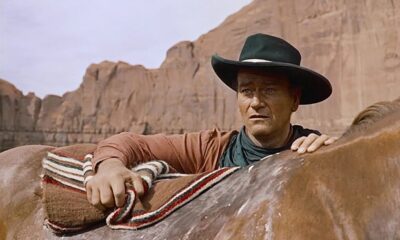
 Entertainment1 year ago
Entertainment1 year ago40 Legendary John Wayne Quotes – My Blog
-
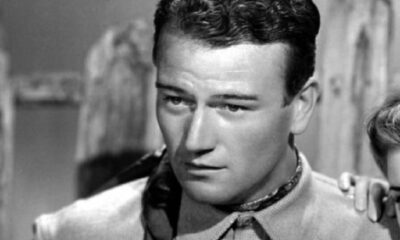
 Entertainment1 year ago
Entertainment1 year agoNew biography reveals the real John Wayne – My Blog
-
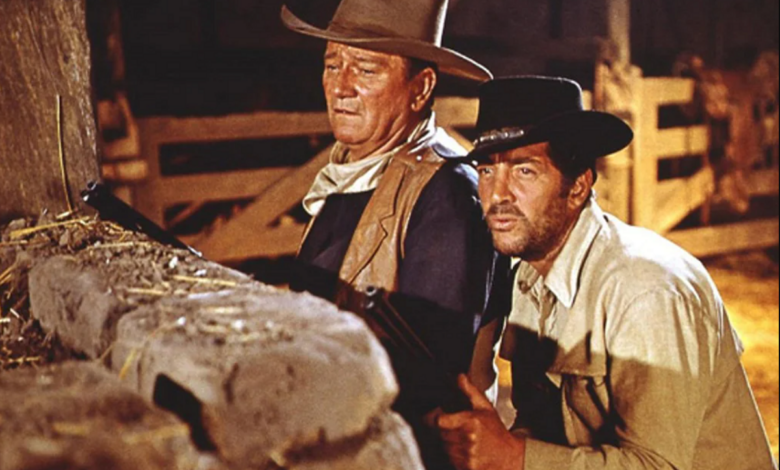
 Entertainment2 years ago
Entertainment2 years agoWhy one POPULAR ACTOR was FIRED from THE SONS OF KATIE ELDER and lost his career as a result! – Old western – My Blog
-
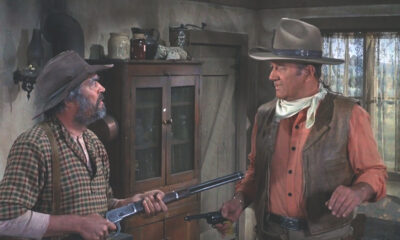
 Entertainment1 year ago
Entertainment1 year agoRio Lobo (1970) marked the last collaboration between John Wayne and Howard Hawks. – My Blog
-
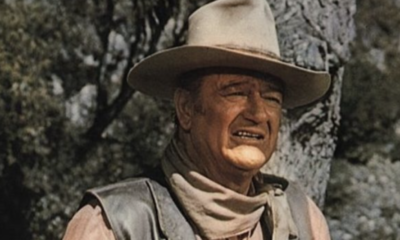
 Entertainment1 year ago
Entertainment1 year agoJohn Wayne and the ‘Bonanza’ Cast Appeared in This Epic Coors Light Commercial – My Blog
-
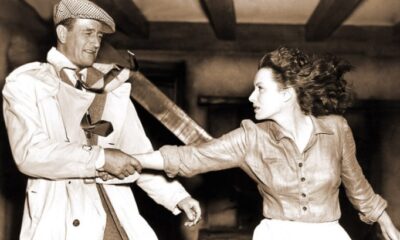
 Entertainment1 year ago
Entertainment1 year agoHow Maureen O’Hara Broke Her Hand During Iconic Scene With John Wayne – My Blog
-
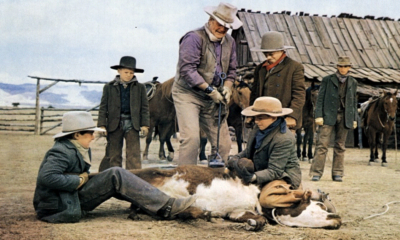
 Entertainment1 year ago
Entertainment1 year agoDid John Wayne really have a good time filming 1972’s The Cowboys? – My Blog



